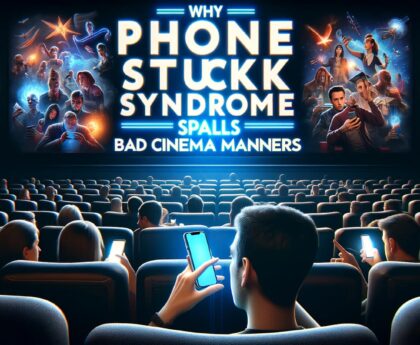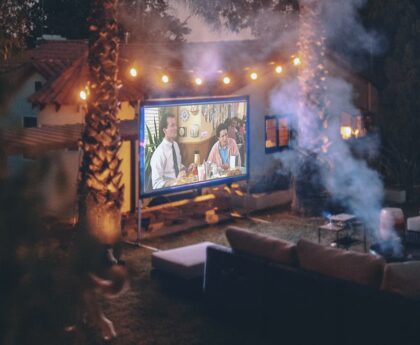Mafia is a universal phenomenon. By making films about organized crime, people show their people, their culture. But the best directors and screenwriters rise above this level, reflecting in their work all of humanity at once. The films are placed in places depending on their artistic merit. And I will try to explain why The Godfather 2 barely entered the top ten, and the first part did not take the top line. And remember, to love mafia movies is to love movies.

1. Once Upon a Time in America (1984)
The origin story of Once Upon a Time in America is quite bizarre. The film about the Jewish mafia of New York during Prohibition was directed by Sergio Leone, an Italian who does not speak English. The basis was the book The Hoods, written in Sing Sing prison by a real Jewish gangster Harry Gray. Such is the international.
In his film, Leone left almost nothing from the book, except for the names of the characters. Once Upon a Time in America has much more in common with Scott Fitzgerald’s The Great Gatsby. This is a universal story about a petty rogue who commits a series of crimes in order to impress a woman and become, in his opinion, a successful member of society. In any other film, we would have been shown the fall of a hero and a moralizing ending. With Leone, everything is more realistic and at the same time more paradoxical: the protagonist falls into a “hibernation of personality”, which takes him the rest of his life.
Once Upon a Time in America is not just the best film by Leone, one of the three greatest directors of all time. This is not just a great gangster picture that exploits all the possible stamps of this genre. Leone’s film is unique in another way: it is a picture about a man stuck in an endless search for lost time.
The scene with Noodles standing in front of the New York Grand Central Station mural to Paul McCartney’s Yesterday is truly universal: genre doesn’t matter, characters don’t matter. We were shown by means of ingenious cinematography what a person feels who understands that everything has passed, all the best is behind.
2. The Godfather (1972)
Many films about the mafia and gangsters are so good that they want to be called flawless. But in fact, only one perfect film has been made in the history of cinema – the first “The Godfather” by Francis Ford Coppola. This is an almost three-hour picture, where there is not a single extra frame, sound, actor’s or plot gesture.
Coppola took Mario Puzo’s excellent book about the criminal life of Italian immigrants after World War II and turned it into a mirror of contemporary American politics, American business, and American family life. As one of the heroes of the comedy You’ve Got Mail says: there is no such case in life that cannot be answered with a quote from The Godfather.
I did not give the first place to The Godfather only because Coppola’s film reveals the essence of American society, while Leone’s film reveals human society in general.
Puzo wrote his novel in order to quickly pay off debts to bookies, and the film was shot in an atmosphere of desperate struggle with the studio and producers. No one believed in Coppola, or Marlon Brando as Don Corleone, or Al Pacino as Michael – they were all under constant threat of being replaced or fired. The Godfather proves that the best works of art are often created at gunpoint—sometimes literally.
3. “Scarface” (Scarface), 1932
The original version of Scarface is the first time that American gangster films have stepped forward from being just entertainment to closer to art. First of all, the brilliant screenwriter Ben Hecht and the no less brilliant director Howard Hawks are to blame for this. They were the first to be able to show the underside of the American dream, to embody on the screen the image of a person who is ready for anything to become a successful resident of the United States.
The personality of the hero Tony Camonte (Paul Muni) owes a lot to Al Capone, who, by the way, also bore the nickname “Scarface”. Some scenes of the film even repeat episodes from his biography, for example, when killers in police uniforms carry out a massacre in the garage. Plot moves – a childhood friend who accompanies the hero on his way, a boss who needs to be killed to take his place, tragic love – are typical for Hollywood cinema of the 30s. But not a single gangster film of that time presented all these clichés with such talent.
The plot of the picture is original enough that “Scarface” could not be called a biopic about the life of a real gangster. Despite this, Capone’s people came to the screenwriter with an urgent request to make the story a little less realistic.
4. “Scarface” (Scarface), 1983
The versatility and ultra-high quality of the original Scarface is underlined by an equally outstanding remake directed by Brian De Palma and written by Oliver Stone. But here the word rethinking is better suited – the plot elements of the original in the film were preserved, but the era has changed, and with it the hero.
It takes place in Miami in the 80s. The height of the cocaine wars. Shooting machine guns on the streets of the city and dismembering with a chainsaw in the bathrooms of cheap motels are ordinary everyday phenomena. Tony Montana (Al Pacino) is a Cuban immigrant with a criminal past who fights his way to a successful life in the United States. His task is much more difficult than that of the hero Paul Muni, who fought gangsters in a more or less civilized Chicago of the 30s.
First, there are real savages around. Secondly, they have radio-controlled bombs and rapid-fire automatic weapons in their hands. But Tony successfully copes with his mission: of all the brutal macho heroes listed in this material, he is the only one who was not afraid to go out against hundreds of Colombian mercenaries with a machine gun in his hands, like a video game hero.
The symbols of Tony’s success with Stone and De Palma turned out to be very capacious and tangible. If you’ve watched MTV’s Cribs, then you know that millionaire American rappers have Scarface either in the top spot among other discs or playing 24 hours a day on a huge TV in the entertainment room. . And some houses even have a real Jacuzzi from the movie.
5. Carlito’s Way (1993)
This film tells about the most exotic kind of mafia in the United States: Puerto Rican, thriving only in certain areas of New York. And this is one of the most realistic films about the life of the underworld. It is based on a couple of novels by Edwin Torres, a New York judge who portrayed Carlito Brigante (Al Pacino) as a collective image of the New York street kings of the 70s.
The film is famous for the brilliant direction of Brian De Palma, who managed to outdo even his own work in Scarface and The Untouchables. Stunning in intensity, dynamics and duration, the scene of the Italian mafia chasing the hero Pacino along the New York subway is worth seeing.
But I would like to draw your attention to the screenplay work of David Koepp. He was able to turn the worst stamps of gangster cinema into a fresh, interesting, very lyrical and touching story about a man who always knew how his life would end.
6. “Casino” (Casino), 1995
Martin Scorsese and Nicholas Pileggi are best known for writing The Goodfellas, but 5 years later they wrote and directed a much more mature work. “Casino” is an absolutely fantastic film in terms of technical performance. There is such a level of directing, editing, soundtrack selection and even the use of a voice-over narrator that one can hardly get more from cinematography.




